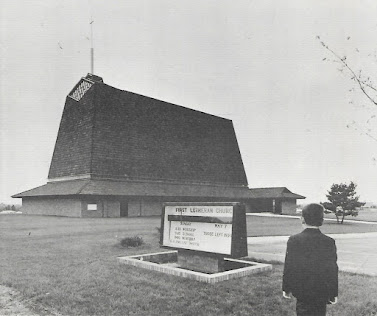We Are Church Together. Together?
By Rev. Megan Morrow, Assistant to the Bishop
It’s amazing
what one can learn from Google tools. I recently discovered, for example, that
though the word “together” was used with consistent frequency throughout the 19th century,
it experienced a steady drop in usage during the 20th century,
until about 1983, when it began a steady 30 year rise in frequency of
use.
What does this mean? Who knows! But, it’s an interesting way
to note how much we’ve reflected “together-ness” in our language over time. I’m
wondering if it’s a reflection of how there are times when we’ve talked less and focused less on “together-ness” in our English-speaking culture as well?
No matter what the surrounding cultures say, though, the
Church should be speaking and embodying healthy “together-ness” in the midst of
cultures, right? After all, the Church is the Body of Christ in the world.
Yes, you would think the Church would be the one speaking
and embodying healthy togetherness, but we struggle to do that as much as
anyone. Yes, the Church is the Body of Christ in the world, but as we all know,
it is made up of very human people who are each at the same time both saint and
sinner. The Body of Christ, the Church, bears the marks of human sinfulness
just as Jesus bore the marks of human sinfulness in his own body in his
suffering and crucifixion.
Our annual Nebraska Synod leadership conference, Theo Con,
takes place in Lincoln again at the end of this month. Pastors, Deacons, Parish
Ministry Associates and others will be studying and reflecting together on the
question of what it means to be the church together in our time, how we both
hit and miss the mark, as well as what new life God might be calling us toward
as the church together congregationally and as individuals, in worship, in
mission, in raising up leaders. We’ll explore what it means to be church
together in our confessions, in justice and mercy, in our welcome extended to
others, and in new forms such as being together online.
Rev. Dr. Andy Root, Professor of youth and family ministry
at Luther Seminary in St. Paul, MN will encourage us to reflect on “Bonhoeffer
and Curating a Theological Community.” Rev. Dr. Rick Carlson and Rev. Dr.
Michelle Holley Carlson, co-pastors at First Lutheran in Kearney and former
faculty at Lutheran Theological Seminary at Gettysburg, will help us dig deeply
into the scriptures regarding the early church, in addition to our theological,
confessional and pastoral roots, in order to gain insight and encouragement for
the ministry to which we’re called.
The marks of human sinfulness take many different forms
within the Church and in actions done by the Church. But one common theme is
that human sinfulness tends to divide people and break down community and
relationships. Human sinfulness works against healthy “together-ness”. You can
probably think of quite a few examples of the breaking down of community and
relationships within churches, and that have been done by the Church at large.
But
just as the crucifixion didn’t have the last word on Jesus’ suffering and death
by human sinfulness; just as Christ was raised from the dead; and just as the
wounds of the crucifixion were healed as evidenced by the scars Jesus allowed
his disciples to touch when he showed himself to them after the resurrection, there is hope for
us. There is also encouragement for us and for the Body of Christ the Church to be healed and to be
agents of healing, bringing people together in healthy ways to acknowledge
wounds and promote healing. God has the power to redeem even the Church from
our sinful ways, reconciling us to God in Christ, bringing us together for the
sake of each other and the world.




Comments
Post a Comment